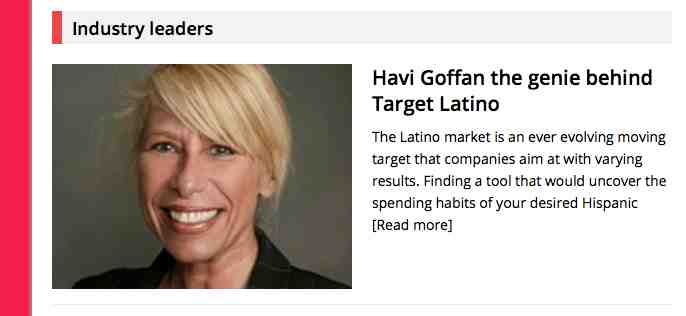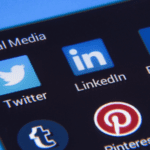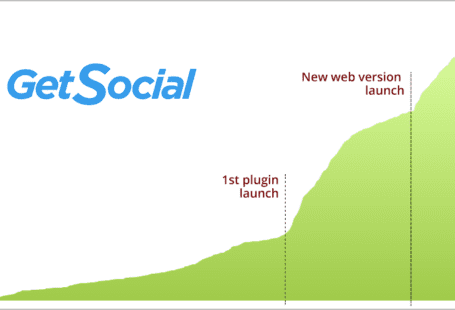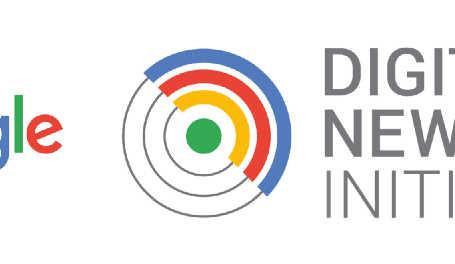In an age where mass broadcasting online is affordable to even smaller brands, it’s easy to lose track of who we’re trying to talk with.
Questions such as “Who are they? Where they come from? What makes them tick?” become blurred within the insane amount of data we capture.
In spite of all the tools we have access today to segment and communicate personally with our audience, there are a lot of businesses who are oblivious to important and significant demographics.
On the other hand, we’ve seen the rise of online influencers, who seem to connect deeply with their audiences and can be a great medium for brands.
However, all that glitters is not gold. Earlier this year, one of our clients did a small experiment where they created fake Instagram influencers with $300 worth of bought followers and engagement. They also secured a couple of deals from companies to prove there are a lot of blind spots and that you can fake your way into popularity.
And this was not the first or the second alert I’ve read online. There is, indeed, something rotten in the kingdom of Instagram.
As such, this month I invited Havi Goffan, Founder of Target Latino, a marketing agency specialized in Hispanic Inbound Marketing, to talk about Social Media, Culture and Influencers.

Hugo Monteiro: Hey Havi, thanks a lot for sparing the time for this interview! First things first: what led to the creation of Target Latino?
Havi Goffan: Back in 2003, not many companies were looking into the Hispanic marketing in the US.
As usual and due to Latin America being economic and politically unstable at the time, many companies were considering leaving the Latin American markets.
This is why I started preaching about the importance of the U.S. Hispanic market. After all, they could be making money in dollars and in their own backyards. No inflation or currency impact and fewer logistics problems.
You have to understand the market, segment it properly and cater to them just like any market, but you have to take culture into account.
It amazes me that, even today, companies still wonder if they should communicate with Hispanics in Spanish or in English… it just blows my mind. This means you know nothing about the market.
I’m more of a doer than a writer so, instead of writing a book about this, I decided to create a project. Lead by example. I believe that people want to keep up with the Joneses. It was just a matter of making a few companies succeed and sharing their story. And that was the goal of Target Latino, the project.
I engaged with seven companies in Atlanta and over 50 volunteers, besides the support of most of the Hispanic organizations in the area.
We generated mini marketing, advertising, and communication strategies targeting their corresponding segments of the Hispanic market for them to implement and then share their success story.
The project was really successful. Everybody benefited from it. Volunteers who were looking for a job got employed, agencies got more clients and exposure and we got a lot of media attention from national and international media like CNN and Adweek. And the strategies were a smashing success.
Once the project was over and a few years later, I followed everyone’s advice to turn Target Latino, the project, into Target Latino, the consulting firm.
HM: Earlier in my career, I’ve participated in a campaign directed at the Brazilian market which, while not Hispanics, are Latinos as well. We’ve seen massive results on social media, going as far as Facebook ads being shared between friends and families. Later, we replicated that same campaign in Europe and it was an absolute failure, which led me to believe that Latin Americans have a much liberal use of social networks.
From your experience, are Latinos more social than search-oriented?
HG: That’s a tricky question to answer because, of course, not all Latinos are the same. Social Media rules in Brazil. Twitter, for example, has massive usage in Brazil, and people communicate socially all the time. So, Brazilians are really talkative in social media, as well as Spaniards. Other Latinos are still “social-oriented”, but their use of social media platforms is more passive. They read but don’t comment as much as their Brazilian or Spaniard counterparts.
Latinos are search AND social-oriented. Latin Americans perform more searches per person than any other demographic in the planet, so disregarding any of these channels is doing yourself a disservice.
However, Latinos shouldn’t be marketed to as a single monolithic block. That’s why I talk about marketing to Hispanics in-culture. A really good example: the calla lily is a flower that in Mexico is about joy and love. In Argentina, it’s the flower of the dead, it’s an offering for people who passed away. Same thing, completely different meaning. And this is not the only example, of course. Understanding the culture is key to effective marketing.
HM: Talking about social vs search, it’s hard not to mention a platform that mixes both: Pinterest. You previously shown me a campaign that you run for a client where a given page had something like 100 Facebook likes… and 200.000 Pins! I also remember my jaw dropping when I saw that, so it could be said that you trust Pinterest to drive results for your clients.
What are your main thoughts about Pinterest and how should people approach this unique network?
HG: Most people perceive Pinterest as one of those networks that are only to share pictures about weddings and food. It could not be further from the truth. Pinterest was the first social commerce platform and a visual search engine (a true Google contender). It’s not a traditional social network because you don’t see conversations/interaction happening: it’s a mute network. People go to Pinterest to Pin their Interests. To get inspired, the take action, to make or to buy.
People have different intents on different social platforms. On Facebook, people spend time checking on what their friends and family are up to. They do not visit Facebook thinking that they will buy something. Their intent is to unplug and gossip a little. Twitter is a stream of consciousness. Twitter is about the here and now. What’s trending, what’s now. People don’t go to Twitter to buy either. Pinterest is inspirational. It prompts you to buy, to do and to learn. You don’t care what others think, you could be a mom looking for a new recipe to cook tomorrow night or you could be looking for the latest trends on men’s suits.
When you go to Facebook, you are mostly checking what’s going on with your friends and family…. and not in a shopping mood. Pinterest is a search engine, people are actively looking for something, so the strategy is different.
Another thing that I love about it is that Pinterest is not a stream. Everything that is Pinned stays there. Just the other day I was going to show a really old post to a client. The goal was to demonstrate the level of engagement Pinterest has and that we can achieve for their brand. Last time I checked, the post had about 100k shares, 95% of those came from Pinterest. When I opened the page, the number had surpassed the 200k. It was an old post but was still getting free traffic and engagement from Pinterest. Try doing that with Facebook and Twitter…
Understanding what Pinterest can do for you and why people go to Pinterest is paramount. If you think pinning a couple of images will grant you these results, you are sadly mistaken. Invest the time on Pinterest because, if well executed, the ROI is tremendous. Just like a solid search engine optimization strategy.
HM: Regarding minorities, I have this quick story to share: Earlier this year I attended a conference where Sky Media’s Head of Multicultural talked about brands missing a lot of opportunities by not getting more involved with minority groups. An interesting insight he gave was that Asians in the UK were the most likely to be victims of home burglary. That happens because they’re also the demographic that purchases more gold and keeps more money at home. Of course, this makes Asians really valuable prospects for insurance companies.
Do you believe brands are still oblivious to these cultural insights and missing a lot of opportunities? If so, what can be done to avoid this?
HG: Many brands still have no idea about what they need to do. About 70% of the US population is bilingual, so there’s a lot of cultural mixing. Brands need to be more open to these issues and commit themselves to really understand.
For Latinos (or other large demographics), there’s no “one size fits all” strategy. Would you do a strategy for all African-Americans? Latin-Americans come from even more countries, which have less of a shared history and culture, so would you expect them to behave as a block?
Another thing is the process of acculturation. Many times people ask you “for how long you live in this country?”. This means nothing because acculturation happens in the brain, it’s not something physical. You can acculturate faster or slower than others.
I always say that one of the true measures of acculturation for Hispanic immigrants is how easy it is for somebody to talk about money and how hard it is to talk about sex. In the Latin American cultures, money is a taboo, something you do not speak about, while in the U.S., the same applies to sex. Although this has been changing a bit lately. Still, acculturation refers to the acquisition of how to act and/or behave within a certain culture.
Another aspect to consider is Cultural Frame Switching. Let’s refresh the concept of Culture as a mental map that guides our actions and interpretation of facts. Bi-cultural individuals are running two of these maps at the same time. It’s like running two “operational systems” in your brain. If you’ve never experienced this it’s quite difficult to comprehend. You can look at an ad and find it pleasing or offensive at the same time, depending on which culture you are running it by. You need a professional with an understanding of both cultures to help you communicate successfully with these audiences.
HM: One of my previous interviewees recently posted this phrase on LinkedIn: “Influencer Marketing: Do they Influence you? If brands truly want to influence, they should make a positive contribution to that culture with leaders of that community. Not Instagrammers.”

I read this phrase at the same time I was browsing Target Latino’s videos on Youtube. I was quite surprised when I saw a really old video from 2009 called Understanding Hispanic Grassroots Marketing, which is very similar to the thing he mentioned: get involved with the communities you want to be relevant to!
Of course, this involves hitting the field, getting your hands dirty, and taking risks, but that’s what it takes to really matter in people’s lives.
Can you tell us a bit about what Target Latino does differently regarding influencer marketing?
HG: First, what is an influencer? An individual whose opinion is so respected, it can change the perspective of my market. It’s quite a difficult thing to assess and measure.
Let’s talk about online influencers. Most companies want to increase sales and believe that a person with a lot of followers is an influencer when it is totally possible that there’s a lack of engagement or that their opinion on the subject is irrelevant.
I try to stay away from influencer marketing and stick to native advertising. If a blog has high traffic, a high number of content shares, low bounce rate and high time on site — besides having relevant content and the audience I am looking for — I may have happened upon a good place to invest on sponsored posts and even on advertising.
Likes and followers on social platforms are easy to get and easy to fake. Analytics are a more reliable way to see if they are solid and you’re getting what you paid for. Needless to say, you’d better analyze your own campaign’s success.
For example, people that run influencer campaigns tell me that they got no sales but they got a lot of impressions. This always amazes me, because if I run a PPC campaign and tell my client that they got 5 million impressions, but no sales and no leads, they would kill me.
Unless advertisers intend to run CPM campaigns to increase awareness, they should be using the same metrics as they do on their paid campaigns.
The type of “influencers” we work with is different. We don’t care so much about them being popular in the traditional sense. They have to produce content that really resonates with the audience, content that makes them stop and read. I always prefer to work with someone authentic that produces engaging content than with someone with many followers but only likes to show for it.
HM: Which social networks are being underestimated right now? Can you share any insights about any untapped potential?
HG: Pinterest is very underestimated, in my opinion. The very first social commerce platform and a visual search engine. Users that visit your site with the intent to buy or to do. Your content lives there and it’s accessible forever. What’s more powerful than that? Of course, you need to craft content specifically tailored to the platform.
There are several factors, including a different image size and style that sets it apart from Facebook, Instagram and the rest. This extra effort might be putting some people off because if you don’t invest properly in Pinterest, the results won’t show.
On the other hand, there are some industries that require creativity to get engagement here. It’s not impossible, but it’s challenging. Just take a look at the success of Lowe’s or GE or Whole Foods.
Snapchat is another case of untapped potential.
One of the brands that are engaging with millennials and Gen-Z on Snapchat is GrubHub, with a campaign that thinks outside the box. They asked Snapchat users to participate on their #Snaphunt — a week-long scavenger hunt — for a chance to win free food! You need to have a good strategy for these channels to work properly.
HM: Last question: What are your predictions for the future of Social and Influencer Marketing?
HG: I believe brands will need to really understand who and where the true influencers are… That the places where they are tapping for influencers may have small groups, or “cliques”, that help each other boost their numbers. That’s not exactly the only place their target market goes. They must do their own search for influencers, instead of only relying on groups or special agencies.
On the other hand, Social Listening is fundamental, because you need to learn and derive insights from the conversations that are taking place about your brand, your competitors and your industry. Find out and reach out to your audience exactly where they are, understand their issues, their needs and desires.
Listening will also allow you to find those real influencers that drive interest. For example, if you sell a craft beer, search for websites and forums that talk about that. See who the most respected members of those communities are and engage directly with them… just don’t ask them to review your product for free. It needs to be a fair exchange. They’ve spent a lot of time and effort into building your ideal audience and gaining their trust. If you create valuable, win-win relationships, compared with other channels, the right influencers will end up making you a lot of money!
Interested in knowing more about Dark Social & Analytics?
[su_button url="https://getsocial.io" target="_blank" style="flat" background="#21D2B5" color="#ffffff" size="7" wide="no" center="yes" radius="auto" icon="" icon_color="#FFFFFF" text_shadow="none" desc="" onclick="" rel="" title="" id="" class=""]SIGN UP FOR FREE[/su_button]





